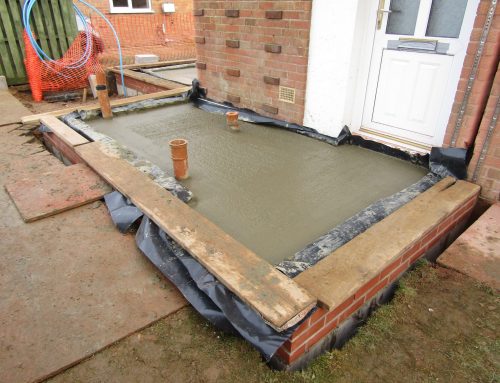The History of Insulation: How It Began and Evolved Into Today’s Most Advanced Technologies

Spray foam insulation is one of the most advanced technologies that exists today for keeping a home’s thermal envelope air-tight, warm, and protected. Since ancient times, people have sought ways to protect their homes from extreme temperatures and humidity. This process has evolved over thousands of years, and today spray foam has become all the rage in the construction of the newest homes. In this text, we are going to go over how insulation materials began and the path to the development of the spray foam insulation machine, the newest development on the market that’s become all the rage.
The First Forms of Insulation
In ancient times, people used whatever they had around to insulate their homes. Different cultures and regions employed a variety of materials:
- Clay and Straw: One of the oldest insulation methods used in regions, such as Mesopotamia and Ancient Egypt. Walls coated with such a mixture provided moderate thermal insulation and protection from the wind.
- Animal Skins: In colder regions such as Northern Europe and Siberia, people used animal skins to insulate their homes. Skins were attached to walls and ceilings, creating an additional layer of protection.
- Stone and Wood: In Europe and Asia, stone and wooden houses were built, taking advantage of their density and mass.
Middle Ages and the Renaissance
With the development of construction technologies in the Middle Ages and the Renaissance, insulation methods gradually grew more clever. This gave rise to:
- Brick and Lime Mortar: In Europe, bricks and lime mortar began to be used for wall construction. Bricks, due to their greater mass, provided better thermal insulation than wooden structures.
- Plaster and Charcoal: In some houses, plaster mixed with charcoal was applied between walls, improving thermal insulation and moisture protection.
The Industrial Revolution and the Beginning of Modern Insulation
The Industrial Revolution in the 19th century brought significant changes to construction and insulation technologies. New materials and methods appeared:
- Mineral Wool: One of the first artificial insulation materials, made of melted rocks. It provided good thermal and sound insulation yet came with significant drawbacks, such as a tendency to settle and the need for protective measures to be taken during installation.
- Asbestos: Asbestos materials became popular due to their fire resistance and insulating properties. However, it was later discovered that asbestos is carcinogenic, and its use was banned in many countries.
The Emergence of Spray Foam
Spray foam, or polyurethane foam, was first developed in the 1940s. This material is an expanding material, coming in the form of open or closed cells, offering the highest insulation qualities available today (an R-value of 6 or 7 in the closed-cell variety). Spray foam’s popularity exploded thanks to a number of characteristics it’s known for, first and foremost spray foam R value (heat retention).
Advantages of Spray Foam in Construction

Lightweight and Ease of Use
This material consists of millions of tiny cells filled with air, making it incredibly lightweight compared to traditional insulation materials. Due to its lightness, spray foam is easy to transport even in large volumes. Transporting the material to construction sites requires less cost and effort, reducing the delivery cost.
Workers can easily lift and move spray foam panels, accelerating the installation process. The material can be easily cut with simple tools such as a knife or saw, allowing it to be quickly adjusted to the required sizes and shapes. This is particularly useful when insulating complex structures and hard-to-reach places, where high precision and adaptability are required.
High Thermal Insulation Properties
The use of spray foam in construction allows for substantial reductions in heat loss, which is especially important in regions with extreme climatic conditions. This is quantified as R value, and closed cell spray foam R value is the class of the industry. In winter, spray foam R value (as high as 6 or 7 per inch) effectively retains heat inside the premises, reducing heating costs. In the summer, the material prevents internal spaces from becoming a sweltering place, reducing the need for air conditioning power and its carbon footprint. For this reason, spray foam insulation R value creates a comfortable indoor microclimate and significant energy savings throughout the year.
Moisture and Mold Resistance
Another significant advantage of spray foam is its resistance to moisture and mold. Unlike many traditional insulation materials, spray foam does not absorb moisture due to its air-tight, closed-cell structure. This makes it a waterproof material for high-humidity environments, such as basements, walls, and spray foam attic insulation, as well as providing no way for pests to crawl through it, unlike fiberglass, which was developed in the 1930s and allows room for pests to nest.
Spray foam insulation (both closed cell and open cell) does not rot or serve as a nutrient medium for mold and mildew growth. This is particularly important, as mold not only destroys building materials but also poses a serious health risk to residents, causing allergic reactions and respiratory diseases. Using spray foam (closed cell) in damp and humid conditions ensures greater air quality, durability of the insulation, and safer living conditions for the home’s occupants.
The use of spray foam in construction also reduces the need for frequent repairs, lasting far longer than other available materials, typically 30-50 years but potentially as long as 80 to 100 years. Spray foam combines many advantages, making it one of the most preferred insulation materials in modern construction.
Problems Before the Advent of Spray Foam
Before the advent of modern insulation materials such as spray foam, there were numerous problems people faced as a result of inadequate insulation:
- High Energy Costs: Substantial heating and air conditioning costs, causing power bills to skyrocket;
- Exposed Gaps & Crevices: Previously there was no other material that could actually stick so tightly to all types of materials the way that spray foam can. Open-cell spray foam also provided a means to insert insulation in super tight spaces, due to its ability to expand by up to 100 times despite starting out as a very small spray;
- Soundproofing: Sound passed through walls much more easily and reflected off of them with greater intensity as well. Spray foam’s two variations either use its dense structure to prevent the passage of airborne sound waves or absorb them, resulting in optimal spray foam sound insulation.
- Short-Lived Building Durability: Constant exposure to extreme temperatures and moisture adversely affected the materials homes were built out of. Wood rotted, metal corroded, and stone and brick structures deteriorated faster.
Advanced Production Technologies

Modern production technologies for spray foam have significantly improved its quality and expanded its forms of installation. Today, spray foam is manufactured using high-tech processes including:
- Automated Foaming Systems: Production begins with polystyrene granules that undergo a steam foaming process. Modern automated systems precisely control temperature and pressure, ensuring uniform foaming and high-quality material. These advancements have also influenced the cost of spray foam insulation.
- Extrusion Technologies: This is used to create spray foam with varying densities, tailored to specific project needs. This versatility makes it suitable for a wide range of construction tasks. The cost to spray foam insulate varies depending on the required density.
- Addition of Flame Retardants: During manufacturing, special substances can be added to enhance fire resistance, UV stability, and strength.
- Solar Panels: These gather the unlimited energy coming from the sun, which can provide for a major share of homes’ insulation needs.
Innovative Installation Methods
Modern installation methods for spray foam have greatly simplified the mounting process and improved insulation quality. These methods include:
- Spray Insulation: Liquid spray foam is applied to surfaces using a special insulation spray foam kit, gun, or can, where it quickly expands and hardens. This creates a seamless insulation layer that effectively eliminates heat loss and prevents thermal bridges. The spray foam insulation cost per sq ft can vary based on the method and equipment used.
- Sandwich Panels: spray foam is used as the core in sandwich panels, enclosed between two layers of durable material (such as metal or plastic). These panels are easy to install and provide high-level thermal insulation, soundproofing, and mechanical strength.
- Modular Systems: Modern modular systems allow for quick and efficient installation of spray foam insulation on construction sites. The ready-made modules easily connect to each other, speeding up installation and reducing waste.
Public Research Universally Declares Polyurethane Spray Foam the Most Potent Insulation Material
A large number of government, public, and university studies have been conducted officially declaring spray foam insulation the most advanced material for stopping heat transfer and the R value of spray foam insulation the highest in the industry, as well as its air-tightness the most optimal. Some of these include:
- The New American Home Project
- The Bullitt Center, featured in the image above
- A private residence in Grand Rapids, Michigan
- The Building America Program
- The National Association of Home Builders
- The Canadian Building Retrofits Initiative
- The Colorado State University Redevelopment Project
- A Norwegian residential complex development project
Final Thoughts
The history of insulation is one of continuous improvement. From natural materials like clay and straw to modern spray foam technologies, humanity has made significant strides. Spray foam, with its magical qualities, has emerged as one of the most effective and popular insulation materials today.
Before modern insulation materials existed, people faced high energy costs, low comfort levels, condensation and mold issues, and poor building durability. Modern technologies like spray foam solve these problems and provide a higher quality of life. You can have all of the wonderful, cutting-edge applications of spray foam explained to you by a spray foam insulation company like Ecothermix, come out, survey your home, and use a spray foam insulation cost calculator to provide you an accurate estimate. It’s never too early to enjoy the most advanced, environmentally friendly insulation material technology has to offer.
Get in touch with us and set an appointment with Ecothermix today.
.[/fusion_text]







